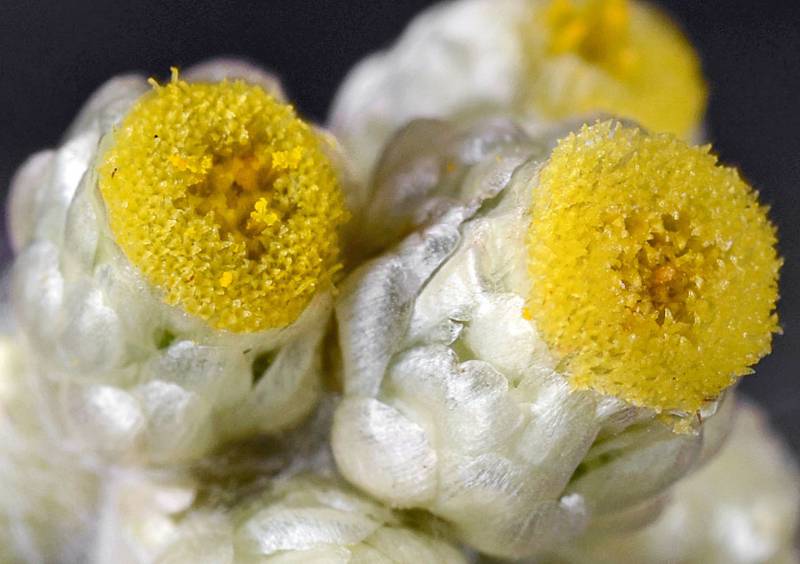Pseudognaphalium microcephalum
Pseudognaphalium californicum
California cudweed, California everlasting
Leaves alternate, oblanceolate to linear, 3-8 cm. long and 3-6 mm. wide, with a wing down the stem below each leaf 4-15 mm. long, the blades loosely white-woolly and with sessile glands.
Heads in loose to dense, flat-topped inflorescences;
involucres broadly top-shaped, 5-6 mm. long;
involucral bracts in 3-4 series, usually shiny and whitish, glabrous, ovate to oblong;
corollas all tubular, the outer pistillate, 35-55, the inner perfect, 4-7;
pappus of capillary bristles.
Achenes rigid, roughened.
Pseudognaphalium microcephalum
Pseudognaphalium californicum
Occurring on both sides of the Cascades crest in Washington; British Columbia to California, east to Montana and Utah.
Occurring west of the Cascades crest in Washington; southwestern Washington to Baja California, Mexico.
- Local floras:
CA,
OR,
WA
- Local Web sites:
CalFlora,
CalPhotos,
Flora NW,
PNW Herbaria
WildflowerSearch
iNaturalist (observations)
USDA Plants Database
- LBJ Wildflower Center
- SEINet
- Plants of the World Online
- Encyclopedia of Life
- Wikipedia
- Google Image Search



